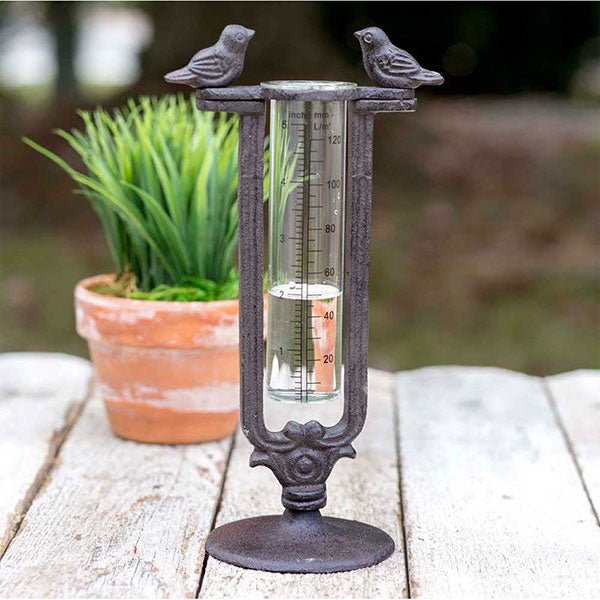The Rain Gauge: Crucial Details and Ideal Practices for Climate Fanatics
Wiki Article
Do It Yourself Rainfall Scale: Basic Steps to Make Your Own
Developing your own Do it yourself rain scale is a reliable and basic method to determine and tape-record precipitation. With just a few typical products and some fundamental actions, you can quickly construct your very own rain scale at home. Allow's get started on making your DIY rainfall gauge today!Gather Materials
To begin constructing your do it yourself rainfall scale, collect all the necessary products utilizing an extensive listing of items. Having the right products available will certainly guarantee the effective creation of your rain scale and enable for precise dimensions of rains. First of all, you will certainly need a clear plastic container or cyndrical tube, such as a plastic container or container. Make certain the container is transparent so that you can easily see the water level inside. Next off, you will certainly require a leader or gauging tape to mark the increments on the container. This will enable you to measure the amount of rains accurately. In addition, you will need a permanent pen or water resistant tape to mark the measurements on the container. This will certainly make sure that the markings continue to be visible also when exposed to rain. You will require a tough base or stake to firmly hold your rainfall scale in area. This can be a wood or metal risk that can be inserted right into the ground or a strong flat surface area to supply stability. Collecting these products beforehand will certainly enhance the building and construction process and make certain that you have whatever you require to produce your very own DIY rainfall scale.Prepare the Container

Mark the Dimension Increments
To accurately determine the quantity of rains, precisely noting the measurement increments on your DIY rain gauge is vital. Without accurate and clear markings, it would certainly be difficult to figure out the exact amount of rains gathered in your rainfall scale. Here are the actions to mark the dimension increments on your rainfall gauge.First, pick the system of dimension that you desire to make use of. One of the most common units for gauging rainfall are millimeters and inches. Use an irreversible pen or water resistant paint to mark the increments on the side of your rain gauge once you have picked the unit. For inches, you can mark every quarter inch or every half inch, relying on your preference. For millimeters, you can mark every 10 millimeters or every 20 millimeters.
When marking the increments, it is necessary to make sure that they are uniformly spaced and clearly noticeable. Utilize a leader or determining tape to guarantee precision and uniformity. Additionally, make sure that the markings are immune to fading or rubbing off, as exposure to the elements might cause them to wear away gradually.
Location the Rainfall Scale Outdoors
The rain scale need to be put outdoors to accurately accumulate rainfall data. The place chosen for the rainfall scale need to be open and complimentary from any kind of blockages that might potentially affect the measurement of rainfall. The Rain Gauge.Additionally, it is crucial to position the rainfall scale on a stable surface area, such as a degree ground or a sturdy article. This will certainly avoid any kind of motion official website or tilting of the gauge, which might bring about incorrect measurements. It is additionally suggested to stay clear of positioning the scale near any kind of sources of artificial water, such as lawn sprinklers or drain systems, as this could conflict with the precision of the dimensions.
Monitor and Document Rainfall Data
Regular surveillance and recording of rains information is necessary for accurate information evaluation and analysis. By keeping track of rainfall dimensions, you can get important insights into climate patterns, climate trends, and water source administration. To successfully keep track of and tape rains data, it is important to develop a routine and keep regular methods.First of all, ensure that your rainfall scale is positioned in an open location away from barriers such as trees or structures that may block rains. Additionally, see to it the rain gauge is degree and safely secured to stop any type of movement that could affect the accuracy of the dimensions.

When videotaping the rainfall data, it is very important to keep in mind the date and time of each measurement. Make Home Page use of a leader or a determining stick to determine the rains deepness in the rain scale, and document this details properly.
To make certain the precision of the dimensions, it is suggested to empty the rainfall scale after each recording. This will certainly avoid any kind of overflow or evaporation from influencing subsequent dimensions.
Conclusion
To conclude, creating a DIY rainfall gauge is a basic and useful way to keep track of and tape-record rainfall information (The Rain Gauge). By complying with the actions laid out in this article, you can conveniently gather products, prepare the container, mark the measurement increments, and place the rain scale outdoors. Frequently monitoring and videotaping rainfall data can give useful info for numerous functionsHaving the best materials on hand will certainly ensure the effective creation of your rain scale and enable for exact measurements of rains.To precisely measure the amount of rainfall, accurately marking the dimension increments on your Do it yourself rainfall gauge is crucial.The rain gauge must be put outdoors to precisely collect rainfall information. The location picked for the rain gauge ought to be open and complimentary from any type of obstructions that might possibly affect the measurement of rainfall.In verdict, producing a DIY rain scale is a functional and straightforward means to check and tape rainfall information.
Report this wiki page